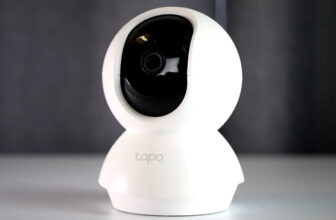Time passed and cell phones went from a single camera to two, three, four and even five sensors. This evolution brought several benefits, such as the ability to capture photos with wider angles and small objects.
However, the existence of many lenses can cause some confusion when buying a new smartphone. Therefore, I am going to explain what each of them is for.
Principal
The main camera is usually the most used on a day-to-day basis. It is in this sensor where manufacturers invest more in technologies and resources, such as artificial intelligence and a smaller aperture for greater light collection. The goal is simple: increase the quality of photos with each new release.
This lens can usually be identified fairly easily as it tends to have a higher number of megapixels compared to the others. That is, most of the time, it is the main camera that does the work of recording your important moments.
Wide angle, ultra wide angle or ultra wide angle
Despite having various names, the function of the wide-angle lens is the same: to capture images with a wider angle, thus making it possible to capture a greater number of elements, people or parts of a landscape. The angle depends on the manufacturer, but is usually around 118 degrees.

Imagine that this sensor is the equivalent of, for example, taking a few steps back to get a wider field of view, giving the impression that the user is further away. Photos taken with this camera may have a little distortion around the edges, but in most cases, the software can apply corrections to make it almost unnoticeable.
Telephoto or telephoto
The telephoto or telephoto lens works in reverse to the wide angle. While ultra-wide expands the angle to fit more elements, this sensor zooms in to zoom in on the frame and capture a close-up shot of the subject or subject, without the user having to physically get close.
Depending on the model, it is possible to apply an optical, digital or hybrid zoom. The first option zooms by reflecting light onto a set of lenses to reduce quality loss, while the second uses the software itself only to "stretch" the frame and give a similar effect, resulting in inferior images. . The hybrid, in turn, fuses the two together to deliver even better photos.
On some devices, this type of lens is also used to create the "portrait mode" effect, which blurs the background of the photo and highlights the face of the subject, or to capture images of small objects, zooming in on them for more detail.
Monochrome
Unlike color sensors, monochrome only allows you to capture black and white images. Although not as popular as the others, several well-known manufacturers have already adopted it. This lens stands out for being able to capture more details than would be possible with the color sensor (RGB).
This is because, in monochrome, photos offer a greater dynamic range. So the cell phone can capture light more efficiently without the color filter on the front. Images captured by this lens offer better tonal ratio, sharpness and contrast.
Macro
As the name suggests, the purpose of the macro lens is to take pictures of close objects. This sensor offers a very short focal length, which allows the user to get closer to the object to capture images with a greater amount of detail, often imperceptible even to the naked eye.
Although interesting, manufacturers do not usually invest much in this type of lens. So most offer fewer megapixels and a lower-quality sensor, resulting in decent photos only in favorable light settings.
Depth
The depth sensor is responsible for creating the "blurred background" effect in portrait mode. The lens works by taking a three-dimensional reading to calculate the depth of field of the environment and understand the position of objects. Thus, the device can combine several images to produce the blur.
However, this sensor is not only for that. In fact, it also serves to better render the images of applications that use augmented reality. Unlike other lenses, the user cannot manually activate the depth lens. This means that it only “kicks in” when the software really needs it.
ToF (time of flight)
ToF technology (Time of Flight, or time of flight in Spanish) is usually integrated into high-end mobile phones. The function of the sensor is to do a 3D mapping to determine the distance between objects from the emission of light.
It works like this: the system can calculate what is in the “background” using a pulse of infrared light emitted by the sensor itself, which is reflected by the captured image and returned to the internal lens. Based on the return time, the device can understand what is farther and what is near.
In addition to improving the capture of photographs in portrait mode, the technology is also applied in biometric 3D facial recognition systems and in virtual or augmented reality applications.
Periscope
The name isn't just marketing: the periscope lens was actually inspired by the periscope, a military object used on battle tanks to observe approaching enemies from outside the vehicle. The purpose of this sensor is to apply a large amount of zoom without losing too much detail.
For this to happen, lenses are placed inside the camera module perpendicular to the device's sensor. Only one lens is inserted into the back of the phone, and below it is a prism that reflects light 90 degrees towards the sensor, but not before the light passes through other lenses.
The zoom effect occurs because the cell phone uses a magnetic mechanism that moves the lens according to the need to get closer, leaving the object closer or further away. Although the operation is similar to the telephoto lens, the periscope camera offers more advanced technology to prevent information loss.







